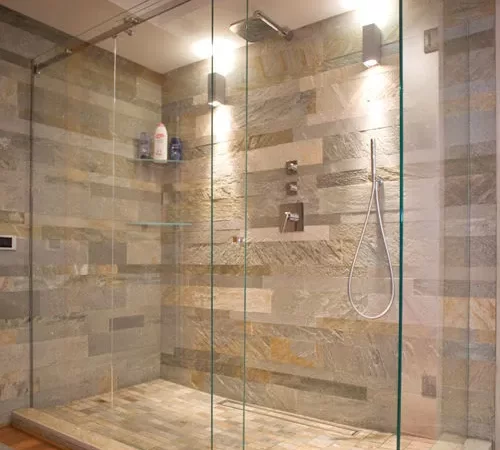Frances provides insight into why internal elevations are an invaluable design resource that will reduce costly mistakes before and during construction. She outlines the basic techniques for creating an elevation drawing.
Before creating an elevation, ensure your floor plan, plumbing and electrical are complete. EdrawMax makes designing elevations much simpler.
Ceiling Height
Bathrooms with high ceilings may feel spacious and luxurious, but their height may make movement difficult. According to the National Kitchen & Bath Association’s recommendations, you should plan a minimum ceiling height of 6 feet 8 inches from floor-to-ceiling space – taking no account for things such as beams or ducting.
The code requires habitable rooms and hallways to have ceilings of at least seven feet tall; for toilet rooms, bathrooms and laundry rooms the minimum ceiling height requirement is 6 feet 8 inches. With some exceptions permitted to this guideline (i.e. shower/tub ceiling height being less than 6feet 8inches when located within a front clearance area with shower head at least 30in above floor level), including where there may be low head clearance areas in front clearance zones such as hallways.
If your bathroom features a sloped ceiling, adding a skylight for visual appeal and natural lighting may add visual interest and natural brightness to the room. Just be sure that it complies with code by leaving at least 30 inches between any fixture or wall in order to meet this criteria.
Clear Floor Space
No wheelchair user should find it easy (or safe) to exit their bathroom if its door swings into them, which is why designing the doors to open outward as much as possible is essential for their safe passage through it.
As part of a complete bathroom design, it is also crucial that each fixture provides sufficient clear floor space in front of it for users with mobility aids to maneuver into and out of position and access fixture controls. Clear floor space must measure at least 30 inches wide by 48 inches deep from the center of front edge of lavatory, toilet, bidet tub or shower and be free from level changes that exceed 1:48 slope (excluding alcove spaces that accommodate recessed elements).
Plan for more than the minimum clear space requirements around bathtub and shower entrances to provide for an array of configurations that work with mobility aids used by individuals with disabilities. This will give them more options to work within their space.
Clear Wall Space
Bathrooms require sufficient wall space in order to avoid clutter protrusion from protruding from walls. If possible, incorporate shelving into walls so as to keep items off of floors and counters; this creates a clean line and makes the room appear larger, as illustrated by this bathroom by Lexs_look. Alternatively, wood tongue-and-groove wall planks may also provide an eye-catching custom touch, as in Regan Baker Design’s bathroom below.
Grab Bar Height
Grab bars can help assist with sitting and standing from bathtubs, showers and toilets. However, for maximum effectiveness it’s essential that they’re installed at an appropriate height – therefore it is vital that an occupational therapist be consulted prior to selecting and placing any grab bars.
Horizontal bars should be installed between 33-36 inches above the floor to enable easy reaching when getting in and out of a tub or shower. Installation on either end wall (head end wall for tubs and faucet end wall for showers) should be within 12 inches minimum from front edge and should go near faucet handles respectively.
Grab bar installation can be challenging due to the need for adequate blocking to fasten them to. Finding suitable block is crucial to getting a secure fit that won’t give way under pressure, as well as using a stud finder to locate hard-to-reach locations.

